Looking back: two new shows reveal different sides of Takashi Murakami
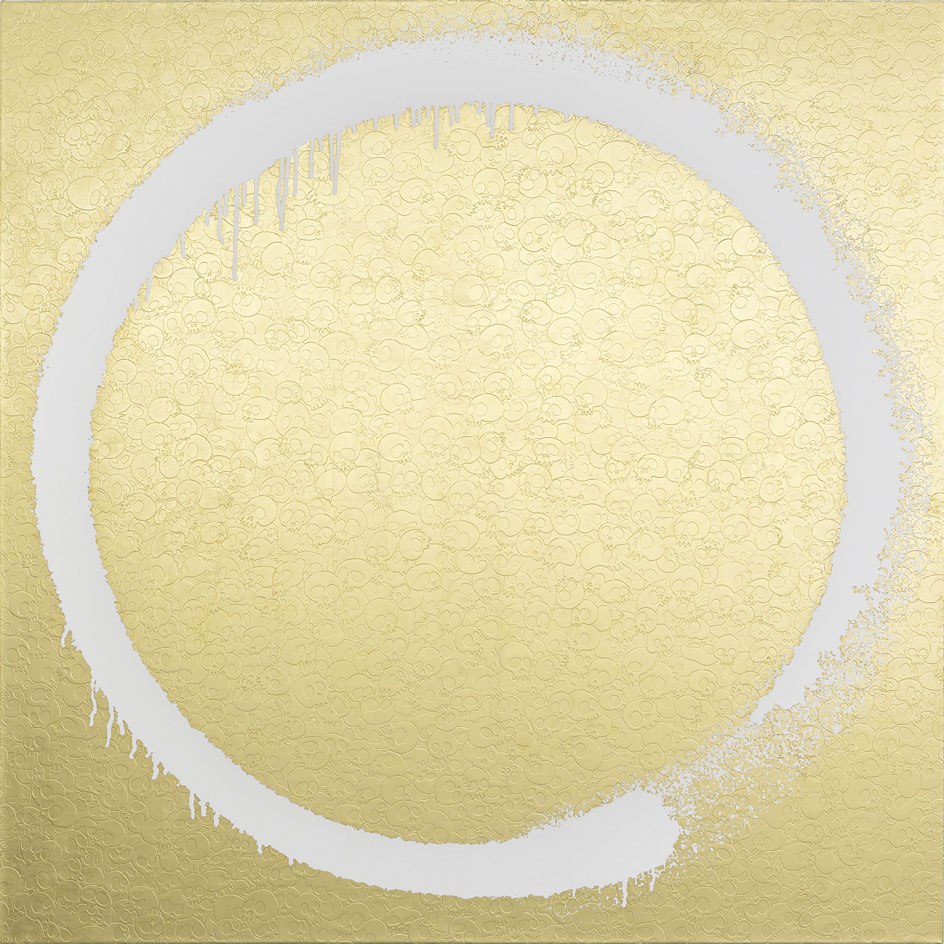
Two concurrent exhibitions of Takashi Murakami's works – a major solo exhibition at the Mori Art Museum and a 'pop-up' of 15 new paintings from his 'Ensō' series at his own Tokyo gallery – offer an intriguing perspective on the contemporary artist's renewed focus on traditional Japanese art.
Although widely exhibited outside of his home country, the Mori Art Museum's exhibition of 50 works including paintings, sculptures and videos is the first significant show of his work in Japan since 2001.
The undisputed highlight is an extraordinarily detailed and colourful 100-metre-long painting that depicts the Buddha's disciples transformed into a mesmerising riot of bulging eyes and toothless grins amid a psychedelic landscape. Titled The 500 Arhats, it was inspired by a set of 100 hanging scrolls created by Kanō Kazunobu (1816–1863).
They are 'unadorned self-portraits of Murakami himself', observes the exhibition's curatorial advisor, art historian Tsuji Nobuo.
Also on show are Murakami's working instructions and sketches used by 200 students from Japanese art colleges who helped complete the work following the 2011 earthquake and tsunami in Japan. Murakami says the disaster had a 'profound influence' on the new direction of his work although his trademark controversial commentary on the complex political and social issues facing modern Japan remains a key theme. For instance, the enormous gold-leaf-clad sculpture The Birth Cry of a Universe represents contemporary society collapsing under the weight of the pursuit of development.
Meanwhile, at his own gallery, a decidedly more minimalist, contemplative series of paintings feature the Ensō or 'circle', a motif in Japanese Zen Buddhism symbolising emptiness, unity and infinity. Here, Murakami – who has a PhD in Nihongo painting – reinterprets the traditional fluid brush stroke, using spray paint over a background of smiling flowers and skulls. He says this new style emerged after he sprayed the word 'HOLLOW' as graffiti on a completed painting.
The artist may be engaged in complex spiritual themes but he has not lost his maverick sense of humour. When asked why his Ensō paintings are in contrasting combinations of black, white, gold and red, he joked, 'Because I thought someone might want to buy them in different colours.'

The former is a minimalist, contemplative series of paintings featuring the Ensō or 'circle', a motif in Japanese Zen Buddhism symbolising emptiness, unity and infinity. Pictured: Ensō: Blood and Bones, 2015.
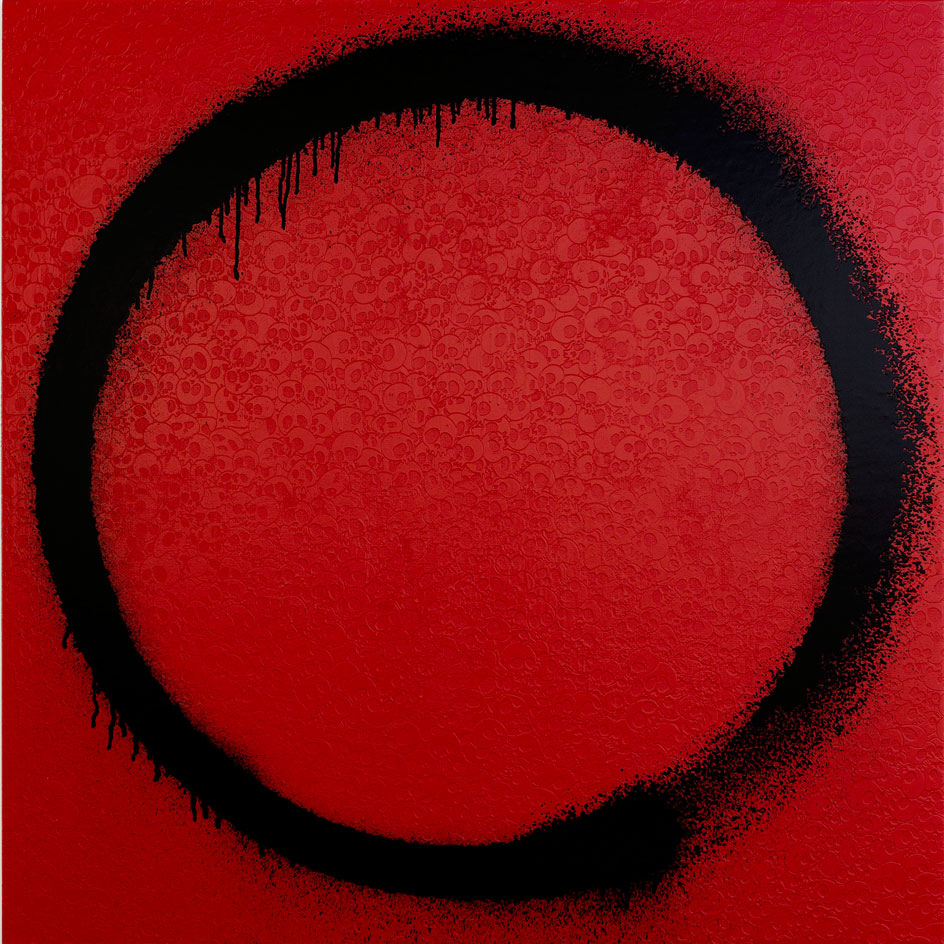
When asked why he chose to paint similar designs in red, black and gold, Murakami replied: 'Because I thought someone might want to buy them in different colours.' Pictured: Ensō: Awakened, 2015.
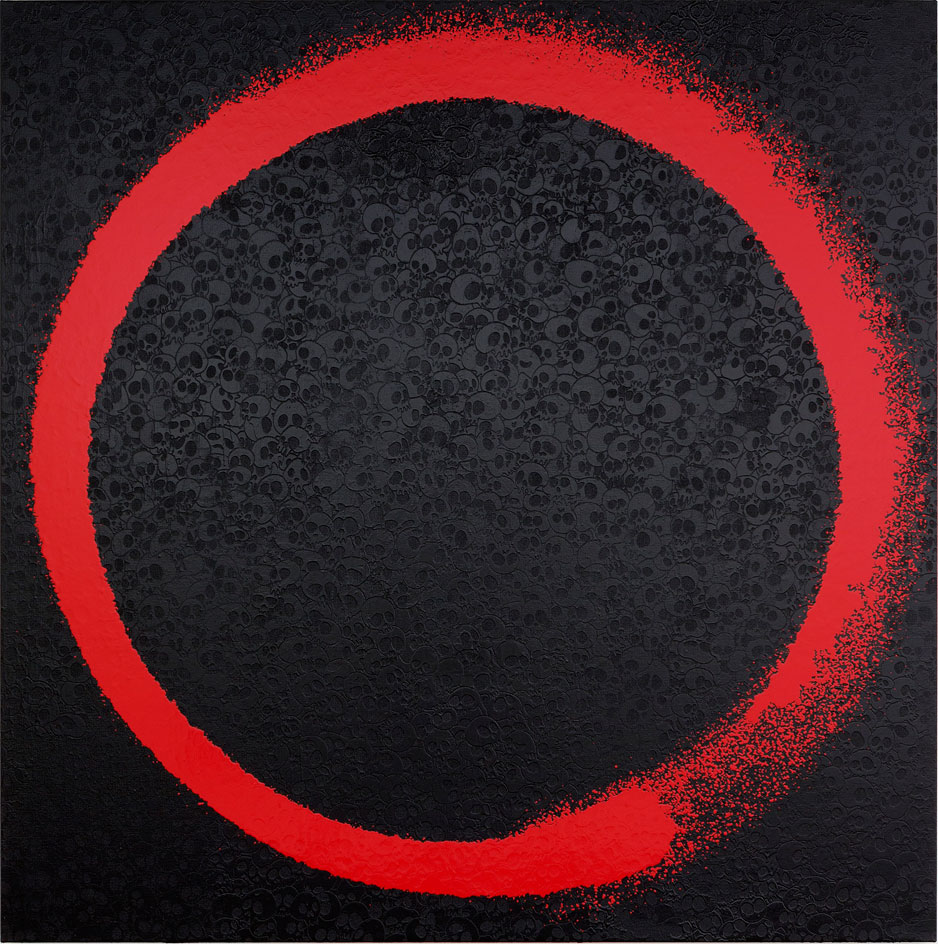
Murakami has a PHD in the art of traditional Nihongo painting. Pictured: Ensō: Eros, 2015.
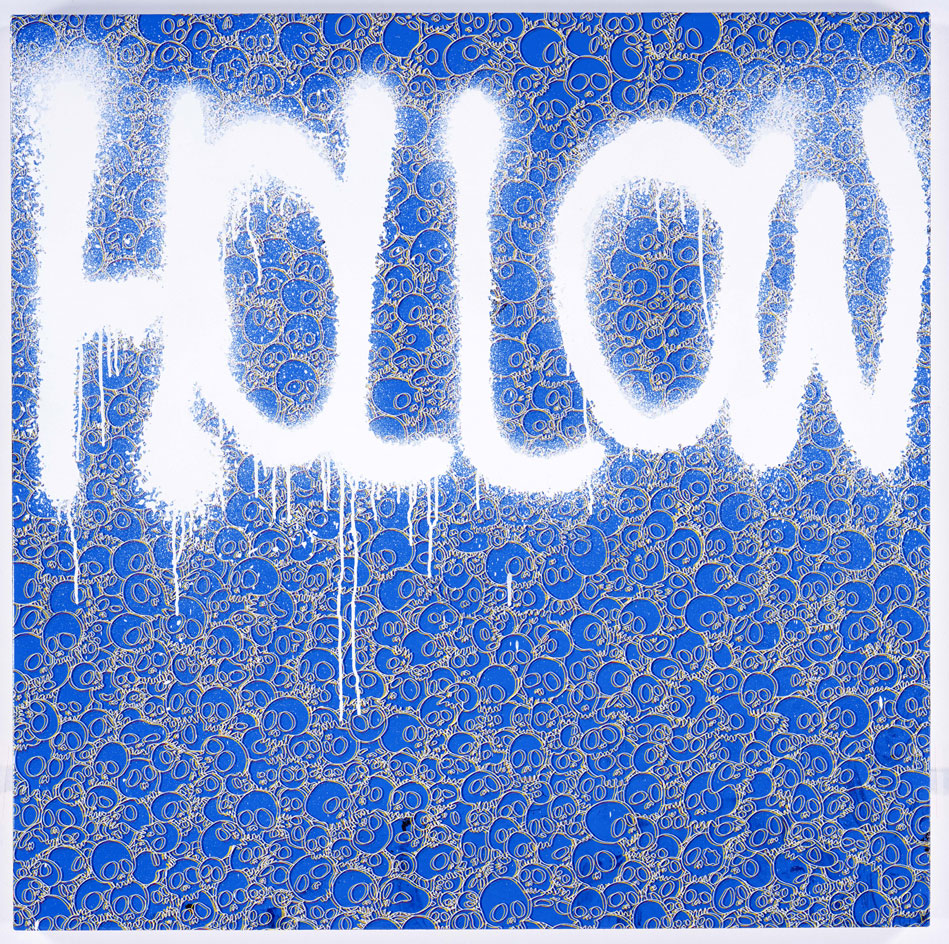
According to Galerie Perrotin which arranged the Kaikai Kiki exhibition, the Ensō paintings represent an epiphany for the artist, resulting from quiet and ongoing spiritual practice. Pictured: Hollow White, 2015.

The Mori Art Museum's exhibition of 50 works, meanwhile, includes paintings, sculptures and videos, and is the first significant show of his work in Japan since 2001
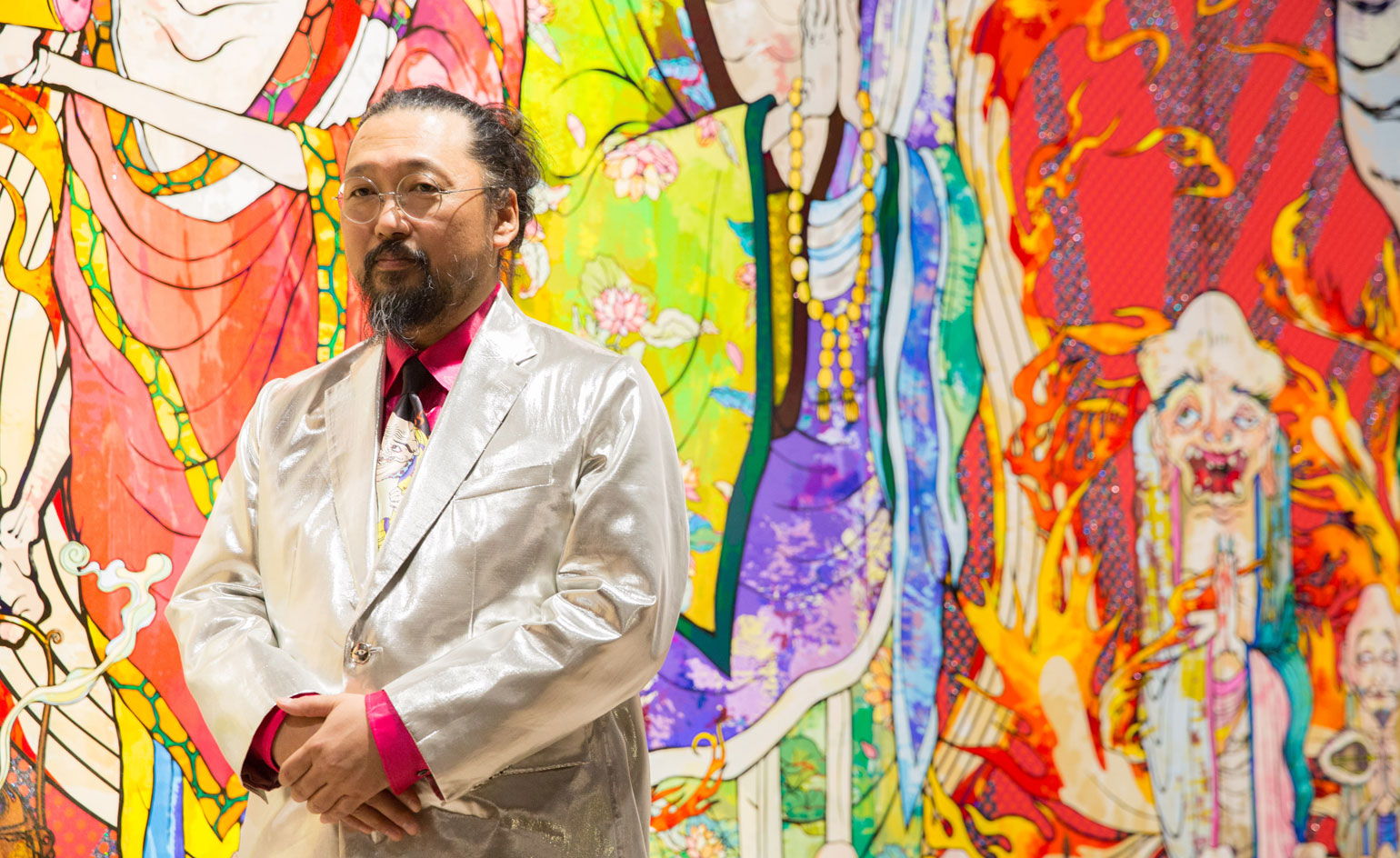
The undisputed highlight is The 500 Arhats – an extraordinarily detailed and colourful 100-metre-long painting that depicts the Buddha's disciples transformed into a mesmerising riot of bulging eyes and toothless grins amid a psychedelic landscape. Pictured: Murakami in front of The 500 Arhats
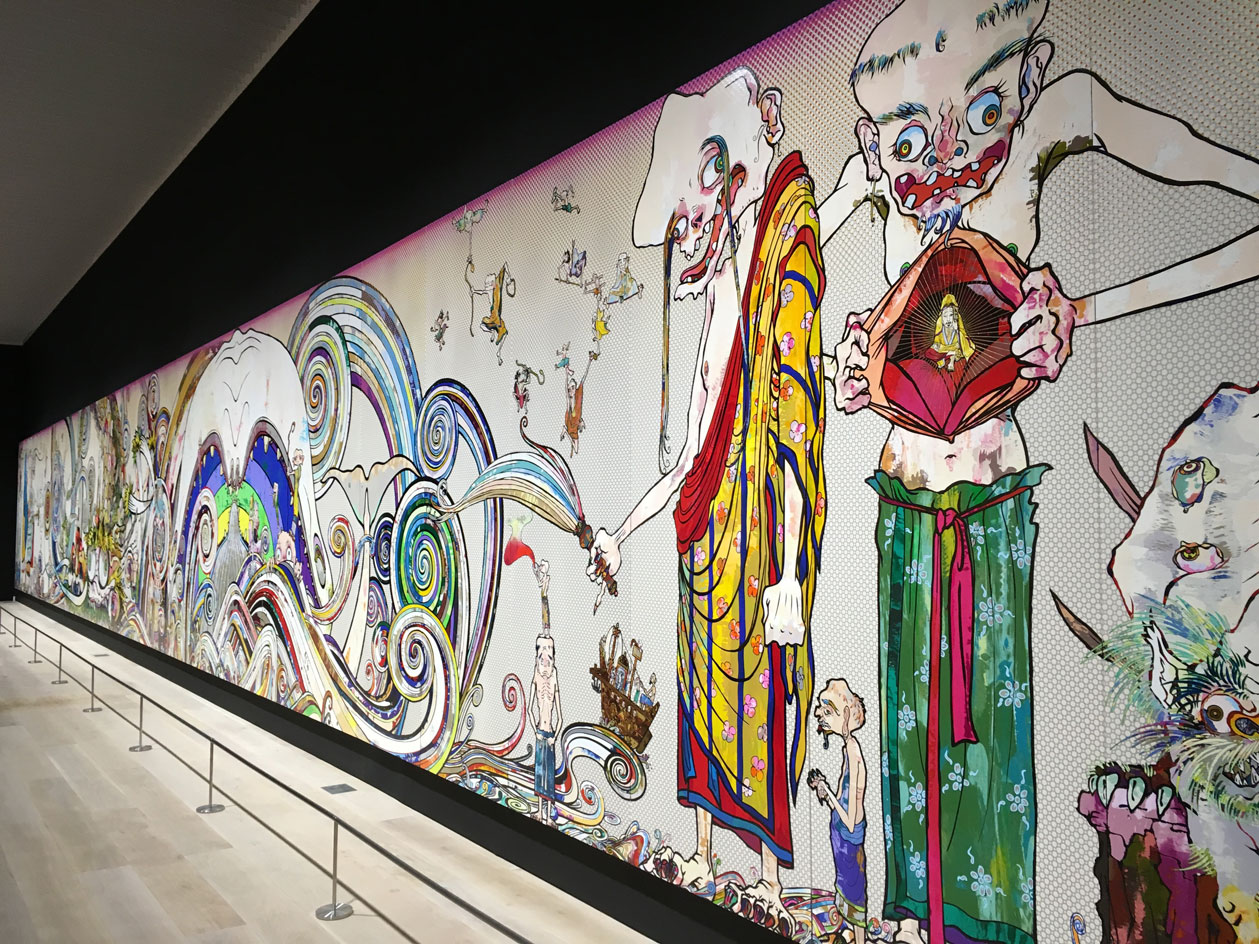
The work was inspired by a set of 100 hanging scrolls created by Kanō Kazunobu (1816–1863). Pictured: The 500 Arhats

They are, observes the exhibition's curatorial advisor, art historian Tsuji Nobuo, 'unadorned self-portraits of Murakami himself'. Pictured: The 500 Arhats (detail)

Murakami’s works have been inspired by manga and kawaii culture with his more recent works reflecting ‘monstrous and charming characters alike, as facetious descendants of past myths.’ To mark the exhibition, Galerie Perrotin launched a 128 monograph with a text by Mari Hashimoto and forewords by Takashi Murakami and Emmanuel Perrotin

For instance, the enormous gold-leaf-clad sculpture The Birth Cry of a Universe represents contemporary society collapsing under the weight of the pursuit of development. Pictured: The Birth Cry of a Universe, 2014

An annotated working sketch of The 500 Arhats
INFORMATION
'Ensō' is on view at Kaikai Kiki Gallery from 31 October – 21 November
The 500 Arhats is on view at the Mori Art Museum from 31 October, 2015 – 6 March, 2016
ADDRESS
Kaikai Kiki Gallery
B1 floor Motoazabu Crest Building
2-3-30 Motoazabu, Minato-ku, Tokyo
Mori Art Museum
53 floor Roppongi Hills Mori Tower
6-10-1 Roppongi, Minato-ku, Tokyo
Receive our daily digest of inspiration, escapism and design stories from around the world direct to your inbox.
Catherine Shaw is a writer, editor and consultant specialising in architecture and design. She has written and contributed to over ten books, including award-winning monographs on art collector and designer Alan Chan, and on architect William Lim's Asian design philosophy. She has also authored books on architect André Fu, on Turkish interior designer Zeynep Fadıllıoğlu, and on Beijing-based OPEN Architecture's most significant cultural projects across China.
-
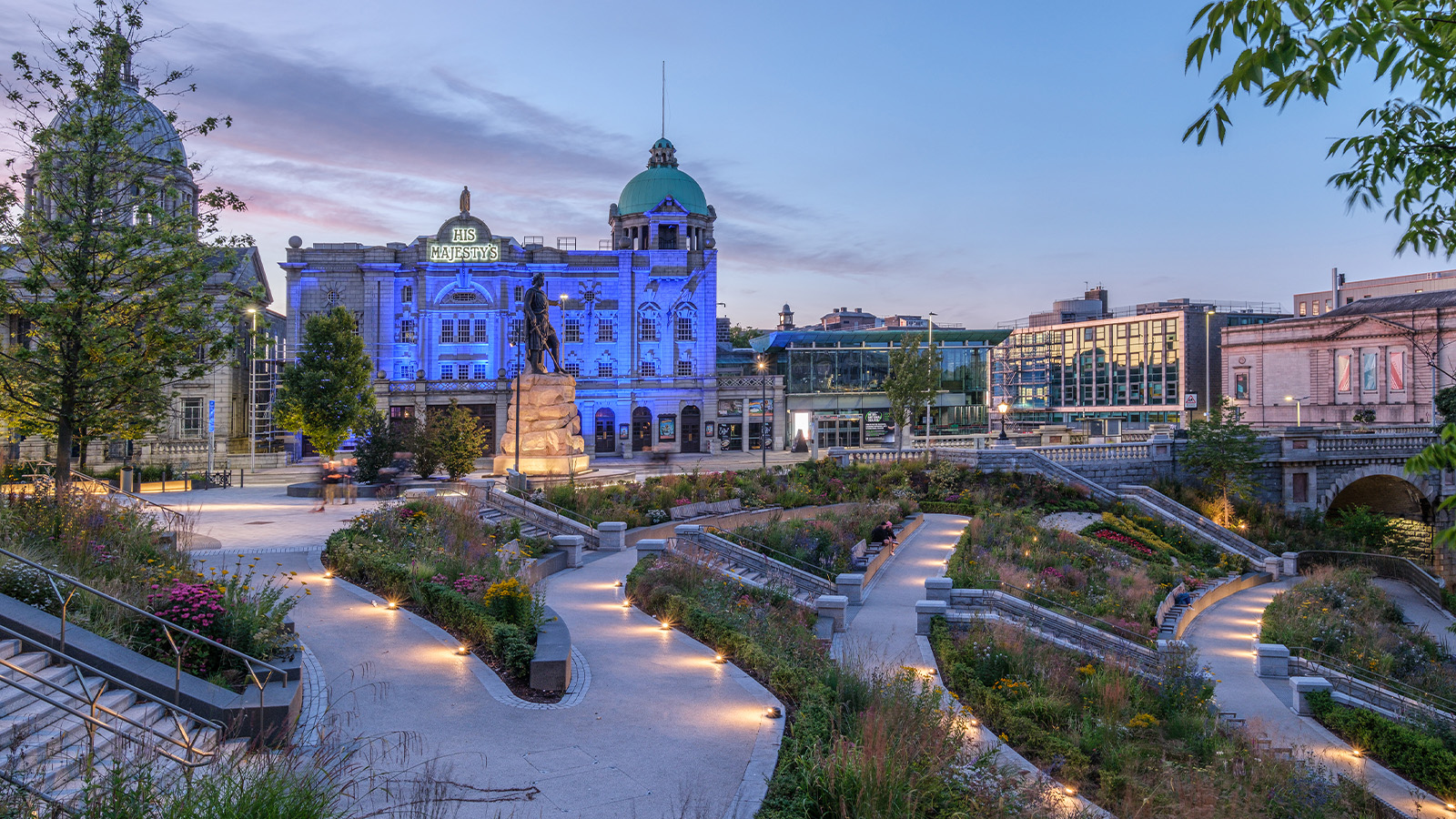 A revived public space in Aberdeen is named Scotland’s building of the year
A revived public space in Aberdeen is named Scotland’s building of the yearAberdeen's Union Terrace Gardens by Stallan-Brand Architecture + Design and LDA Design wins the 2025 Andrew Doolan Best Building in Scotland Award
-
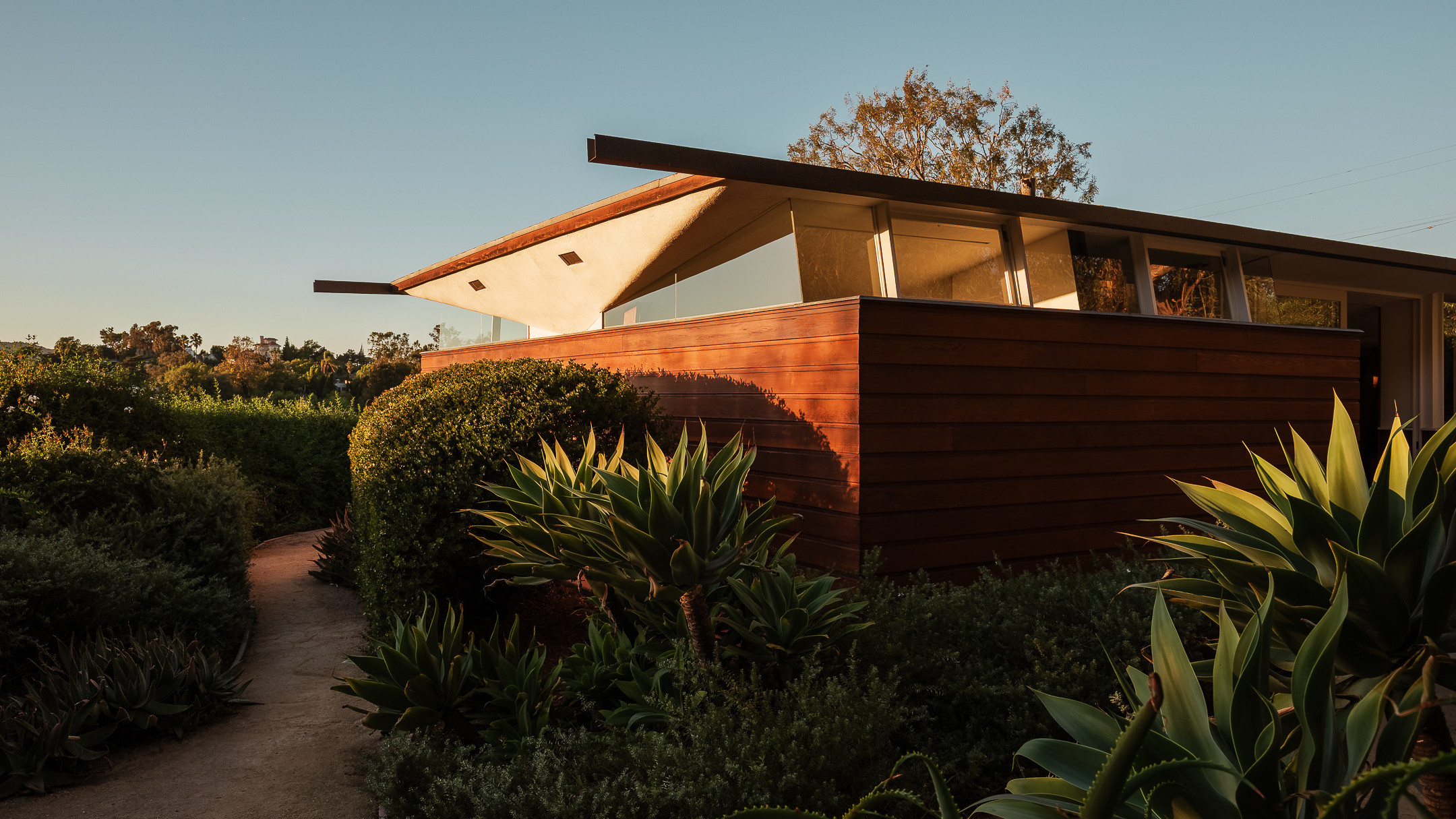 Own an early John Lautner, perched in LA’s Echo Park hills
Own an early John Lautner, perched in LA’s Echo Park hillsThe restored and updated Jules Salkin Residence by John Lautner is a unique piece of Californian design heritage, an early private house by the Frank Lloyd Wright acolyte that points to his future iconic status
-
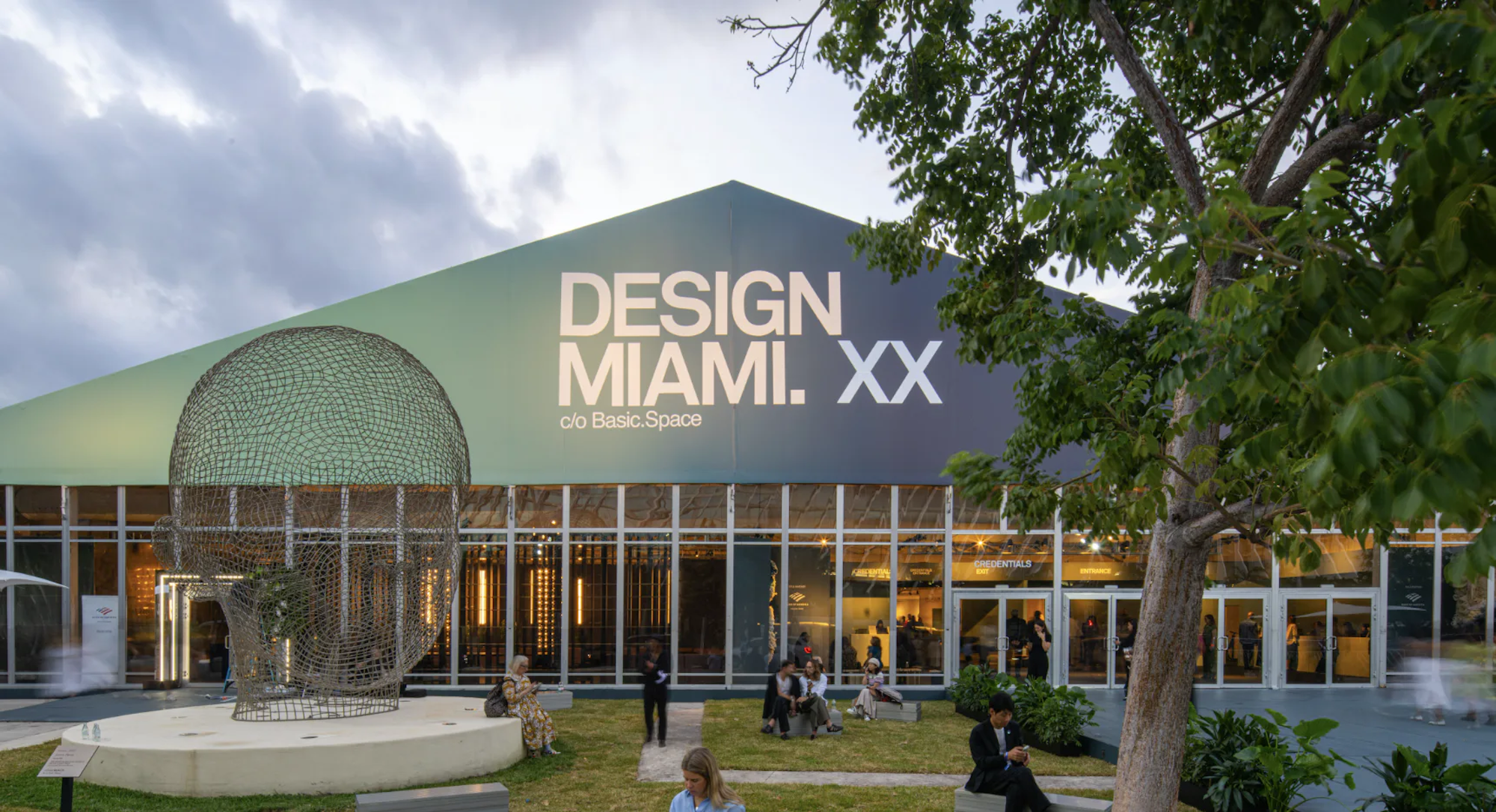 20 things that positively delighted us in and around Design Miami this year
20 things that positively delighted us in and around Design Miami this yearFrom covetable 20th-century masterpieces to a tower made from ceramic pickles, these were the works that stood out amid the blur of Art Week
-
 Out of office: The Wallpaper* editors’ picks of the week
Out of office: The Wallpaper* editors’ picks of the weekIt’s been a week of escapism: daydreams of Ghana sparked by lively local projects, glimpses of Tokyo on nostalgic film rolls, and a charming foray into the heart of Christmas as the festive season kicks off in earnest
-
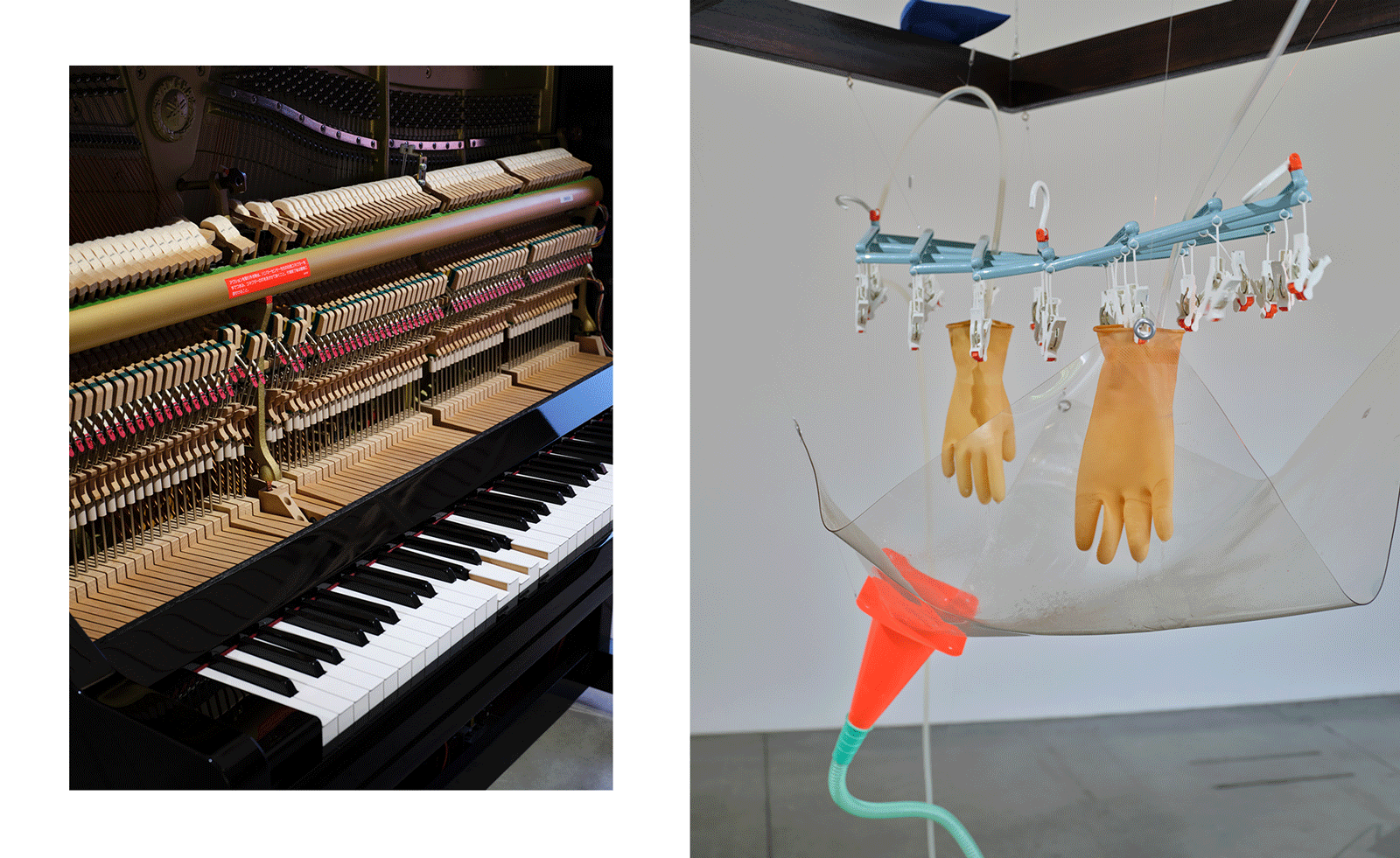 Yuko Mohri’s living installations play on Marcel Duchamp’s surrealism
Yuko Mohri’s living installations play on Marcel Duchamp’s surrealismThe artist’s seven new works on show at Milan’s Pirelli HangarBicocca explore the real and imaginary connections that run through society
-
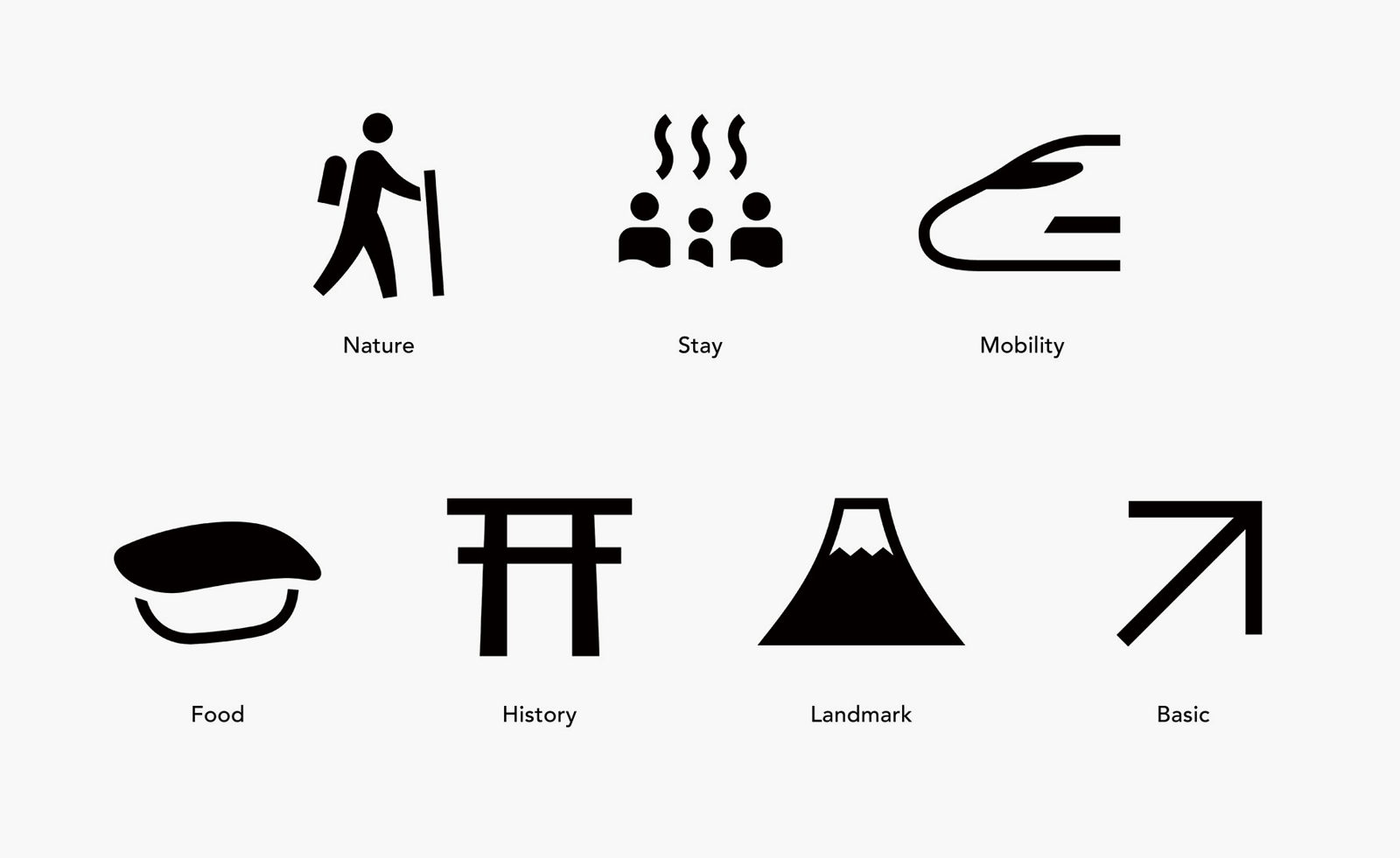 Get the picture? A new exhibition explores the beautiful simplicity of Japanese pictograms
Get the picture? A new exhibition explores the beautiful simplicity of Japanese pictogramsThe simple, minimalist forms of a pictogram are uniquely Japanese, as new exhibition 'Pictograms: Iconic Japanese Designs' illustrates
-
 Out of office: the Wallpaper* editors’ picks of the week
Out of office: the Wallpaper* editors’ picks of the weekIt was a jam-packed week for the Wallpaper* staff, entailing furniture, tech and music launches and lots of good food – from afternoon tea to omakase
-
 Out of office: what the Wallpaper* editors have been up to this week
Out of office: what the Wallpaper* editors have been up to this weekThis week saw the Wallpaper* team jet-setting to Jordan and New York; those of us left in London had to make do with being transported via the power of music at rooftop bars, live sets and hologram performances
-
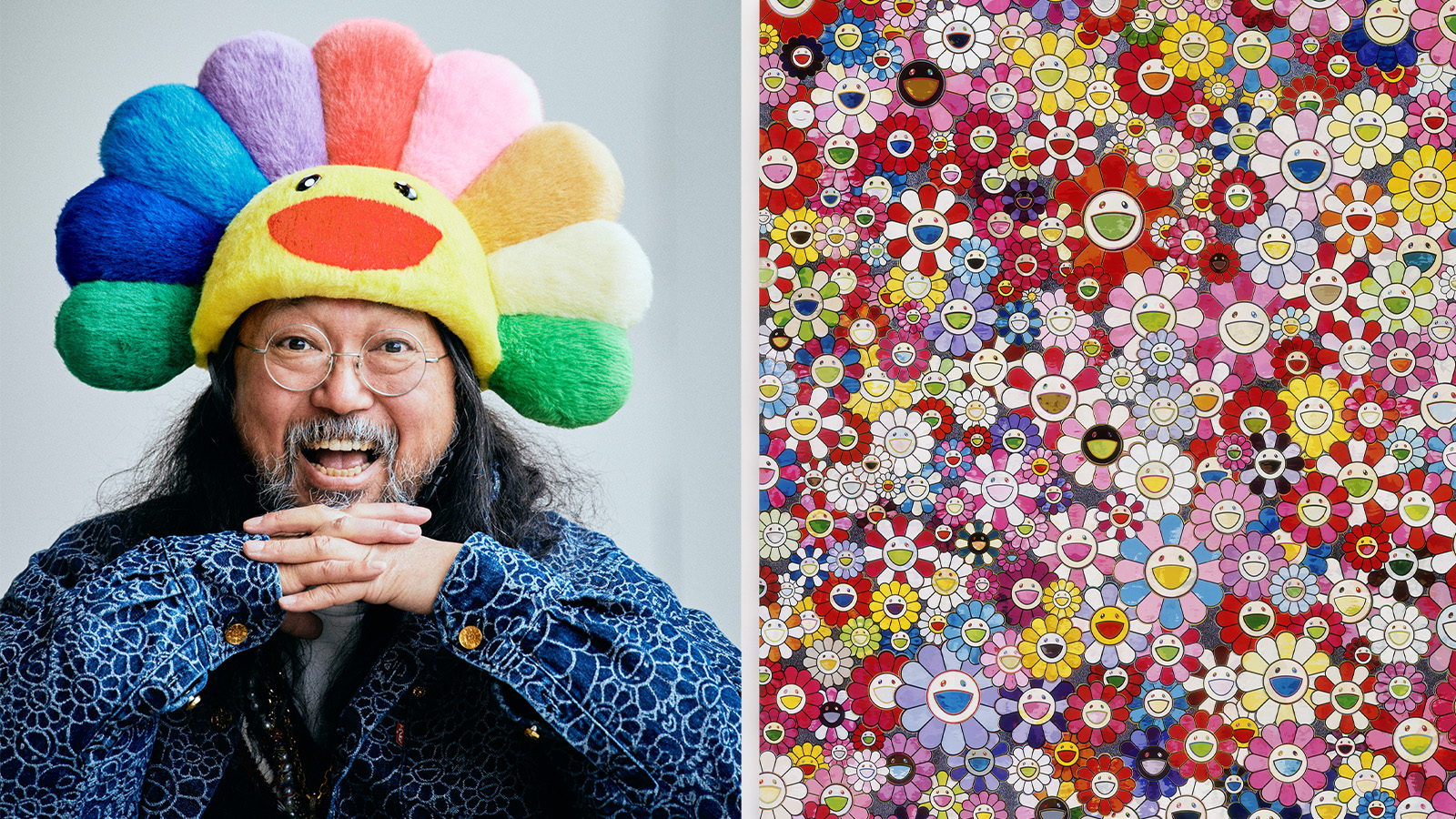 A major Takashi Murakami exhibition sees the world in kaleidoscopic colour
A major Takashi Murakami exhibition sees the world in kaleidoscopic colourThe Cleveland Art Museum presents 'Takashi Murakami 'Stepping on the Tail of a Rainbow', exploring outrage and escapist fantasy
-
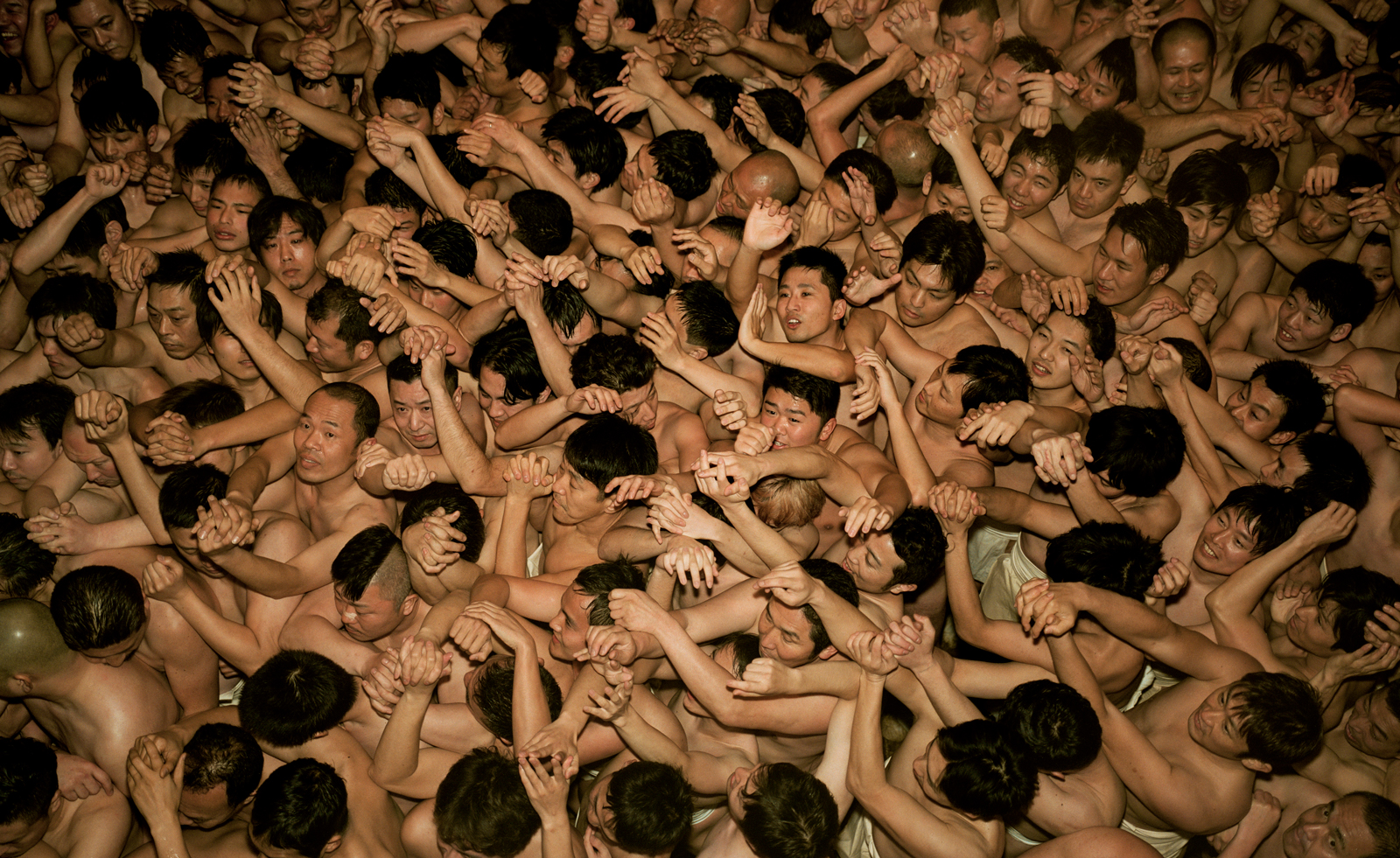 Inside Kyotographie, Japan’s world-renowned photography festival
Inside Kyotographie, Japan’s world-renowned photography festivalKyotographie 2025 embraces the theme ‘Humanity’ in Kyoto – Amah-Rose Abram reports with the highlights, from major and emerging photographers
-
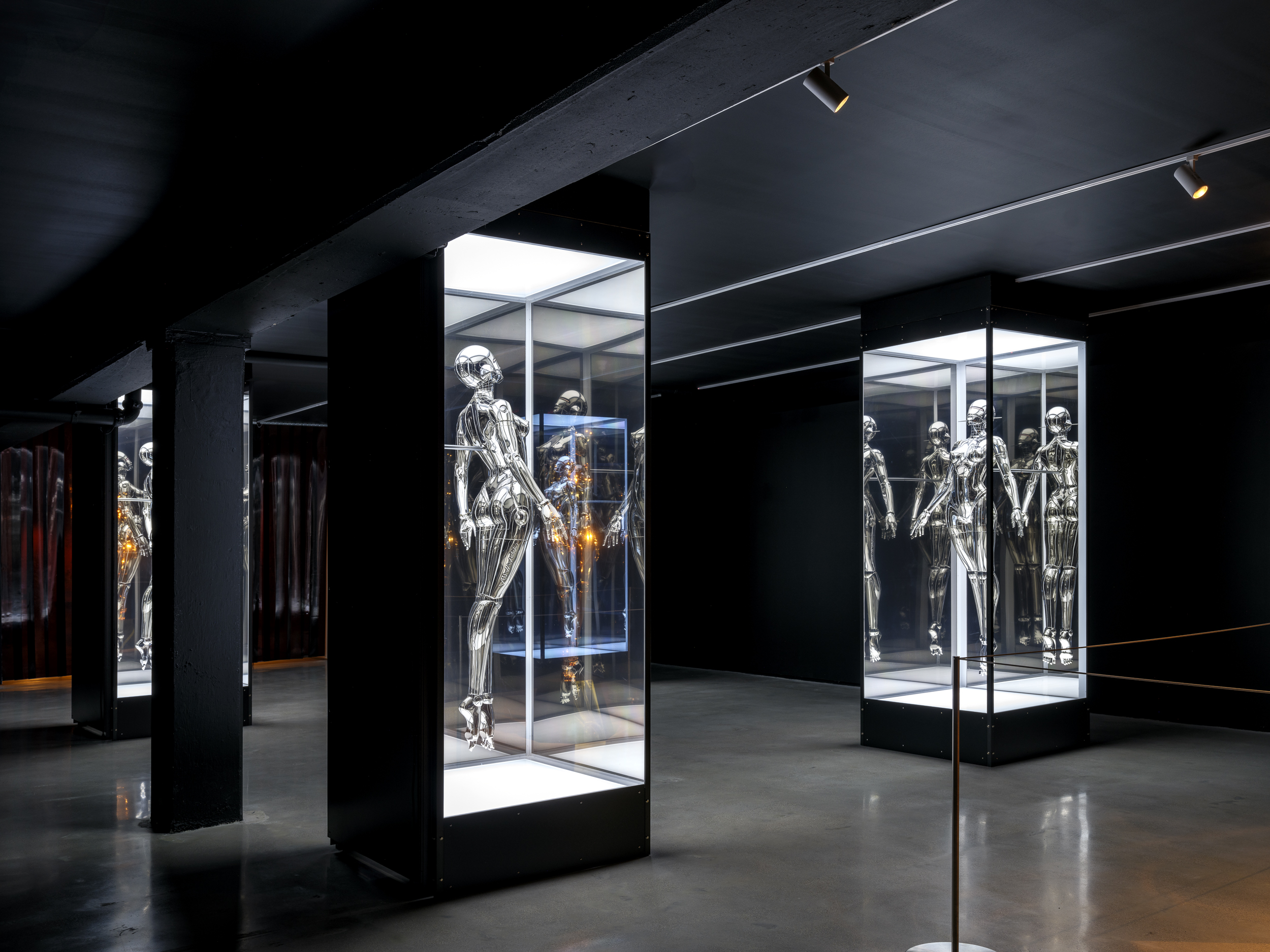 Miami’s new Museum of Sex is a beacon of open discourse
Miami’s new Museum of Sex is a beacon of open discourseThe Miami outpost of the cult New York destination opened last year, and continues its legacy of presenting and celebrating human sexuality